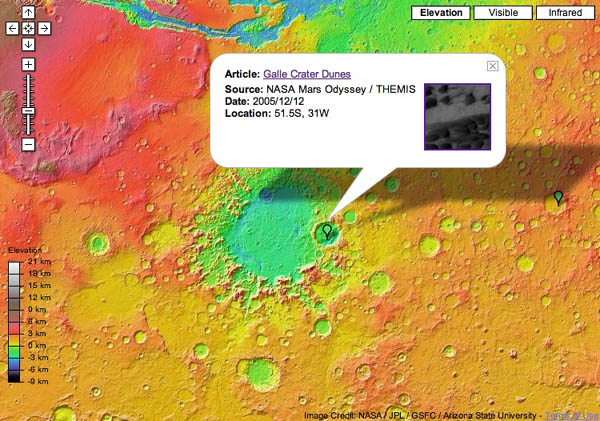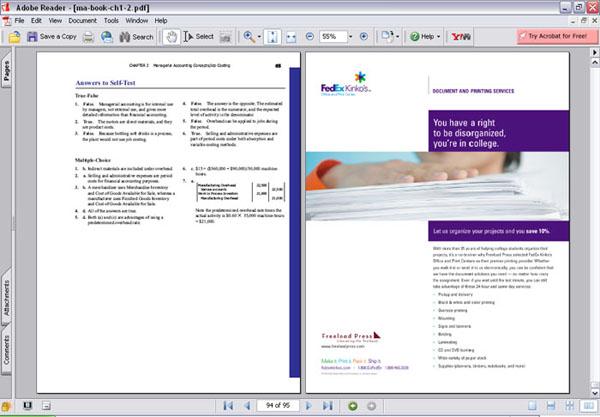The next text project came forth from the realization that twenty-five years into the application of new media to teaching and learning, textbooks have not fully tapped the potential of new media technology. As part of this project, we have invited leading scholars and practitioners of educational technology from specific disciplines to attend meetings with their peers and the institute. Yesterday, we were fortunate to spend the day talking to a group of American History teachers and scholars, some of whom created seminal works in history and new media. Over the course of the day, we discussed their teaching, their scholarship, the creation and use of textbooks, new media, and how to encourage the birth of the next generation born digital textbook. By of the end of the day, the next text project started to take a concrete form. We began to envision the concept of accessing the vast array of digitized primary documents of American History that would allow teachers to formulate their own curricula or use guides that were created and vetted by established historians.
Attendees included:
David Jaffe, City University of New York
Gary Kornblith, Oberlin College
John McClymer, Assumption College
Chad Noyes, Pierrepont School
Jan Reiff, University of California, Los Angeles
Carl Smith, Northwestern University
Jim Sparrow, University of Chicago
Roy Rosenzweig, George Mason University
Kate Wittenberg, EPIC, Columbia University
The group contributed to influential works in the field of History and New Media, including Who Built America, The Great Chicago Fire and The Web of Memory, The Encyclopedia of Chicago, the Blackout History Project, the Visual Knowledge Project, History Matters,the Journal of American History Textbook and Teaching Section, and the American History Association Guide to Teaching and Learning with New Media.
Almost immediately, we found that their excellence in their historical scholarship was equally matched in their teaching. Often their introductions to new media came from their own research. Online and digital copies of historical documents radically changed the way they performed their scholarship. It then fueled the realization that these same tools afforded the opportunity for students to interact with primary documents in a new way which was closer to how historians work. Often, our conversations gravitated back to teaching and students, rather than purely technical concerns. Their teaching led them to the forefront of developing and promoting active learning and constructionist pedagogies, by encouraging an environment of inquiry-based learning, rather than rote memorization of facts, through the use of technology. In these new models, students are guided to multiple paths of self-discovery in their learning and understanding of history.
We spoke at length on the phrase coined by attendee John McClymer, “the pedagogy of abundance.” With access to rich archives of primary documents of American history as well as narratives, they are not faced with the problems of scarcity of assets. This led to the discussion of the spectrum of teaching in higher education. The motivations and resources of history teachers differ greatly. Many history teachers lack the resources, (particularly the adjunct history teacher) or the creativity to move away from the traditional “march” through the standard history survey course and textbook.
The discussion also included issues of resistance, which were particularly interesting to us. Many meeting participants mentioned student resistance to new methods of learning including both new forms of presentation and inquiry-based pedagogies. In that, traditional textbooks are portable and offer an established way to learn. They noted an institutional tradition of the teacher as the authoritative interpreter in lecture-based teaching, which is challenged by active learning strategies. Further, we discussed the status (or lack of) of the group’s new media endeavors in both their scholarship and teaching. Depending upon their institution, using new media in their scholarship had varying degrees of importance in their tenure and compensation reviews from none to substantial. Quality of teaching had no influence in these reviews. Therefore, these projects were often done, not in lieu of, but in addition to their traditional publishing and academic professional requirements.
The combination of an abundance of primary documents (particulary true for American history) and a range of teaching goals and skills led to the idea of adding layers on top of existing digital archives. Varying layers could be placed on top of these resources to provide structure for both teachers and students. Teachers who wanted to maintain the traditional march through the course would still be able to do so through guides created by the more creative teacher. Further, all teachers would be able to control the vast breadth of material to avoid overwhelming students and provide scaffolding for their learning experience. We are very excited by this notion, and will further refine the meeting’s groundwork to strategize how this new learning environment might get created.
We are still working through everything that was discussed, however, we left the meeting with a much clearer idea of the landscape of the higher education history teacher / scholar, as well as, possible directions that the born digital history textbook could take.


